Clustered Regularly Interspaced short palindromic repeats-Based Microfluidic System in Infectious Diseases Diagnosis: Current Status, Challenges, and Perspectives
- PMID: 36257813
- PMCID: PMC9731715
- DOI: 10.1002/advs.202204172
Clustered Regularly Interspaced short palindromic repeats-Based Microfluidic System in Infectious Diseases Diagnosis: Current Status, Challenges, and Perspectives
Abstract
Mitigating the spread of global infectious diseases requires rapid and accurate diagnostic tools. Conventional diagnostic techniques for infectious diseases typically require sophisticated equipment and are time consuming. Emerging clustered regularly interspaced short palindromic repeats (CRISPR)/CRISPR-associated proteins (Cas) detection systems have shown remarkable potential as next-generation diagnostic tools to achieve rapid, sensitive, specific, and field-deployable diagnoses of infectious diseases, based on state-of-the-art microfluidic platforms. Therefore, a review of recent advances in CRISPR-based microfluidic systems for infectious diseases diagnosis is urgently required. This review highlights the mechanisms of CRISPR/Cas biosensing and cutting-edge microfluidic devices including paper, digital, and integrated wearable platforms. Strategies to simplify sample pretreatment, improve diagnostic performance, and achieve integrated detection are discussed. Current challenges and future perspectives contributing to the development of more effective CRISPR-based microfluidic diagnostic systems are also proposed.
Keywords: clustered regularly interspaced short palindromic repeats/clustered regularly interspaced short palindromic repeats-associated proteins biosensing mechanisms; infectious diseases diagnosis; integrated detection; microfluidic platforms.
© 2022 The Authors. Advanced Science published by Wiley-VCH GmbH.
Conflict of interest statement
The authors declare no conflict of interest.
Figures


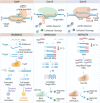
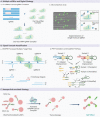
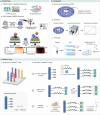


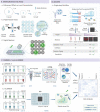
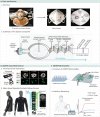
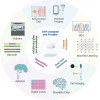
Similar articles
-
Harnessing the power of clustered regularly interspaced short palindromic repeats (CRISPR) based microfluidics for next-generation molecular diagnostics.Mol Biol Rep. 2024 Aug 8;51(1):896. doi: 10.1007/s11033-024-09840-8. Mol Biol Rep. 2024. PMID: 39115550 Review.
-
Challenges and Opportunities for Clustered Regularly Interspaced Short Palindromic Repeats Based Molecular Biosensing.ACS Sens. 2021 Jul 23;6(7):2497-2522. doi: 10.1021/acssensors.1c00530. Epub 2021 Jun 18. ACS Sens. 2021. PMID: 34143608
-
The CRISPR-Cas system as a tool for diagnosing and treating infectious diseases.Mol Biol Rep. 2022 Dec;49(12):11301-11311. doi: 10.1007/s11033-022-07752-z. Epub 2022 Jul 20. Mol Biol Rep. 2022. PMID: 35857175 Free PMC article.
-
Clustered Regularly Interspaced Short Palindromic Repeats (CRISPR)/Cas Advancement in Molecular Diagnostics and Signal Readout Approaches.J Mol Diagn. 2021 Nov;23(11):1433-1442. doi: 10.1016/j.jmoldx.2021.07.025. Epub 2021 Aug 25. J Mol Diagn. 2021. PMID: 34454111 Review.
-
CRISPR/Cas system and its application in the diagnosis of animal infectious diseases.FASEB J. 2024 Dec 13;38(24):e70252. doi: 10.1096/fj.202401569R. FASEB J. 2024. PMID: 39726403 Free PMC article. Review.
Cited by
-
Fully Integrated Microfluidic Platform for Multiplexed Detection of Hunov by a Dynamic Confined-Space-Implemented One-Pot Rpa-Lamp System.Adv Sci (Weinh). 2024 Mar;11(9):e2306612. doi: 10.1002/advs.202306612. Epub 2023 Dec 21. Adv Sci (Weinh). 2024. PMID: 38126673 Free PMC article.
-
Editorial: Advances in the diagnosis and genomic research of surveillance-response activities in emerging, re-emerging, and unidentified infectious diseases.Front Public Health. 2023 May 23;11:1182918. doi: 10.3389/fpubh.2023.1182918. eCollection 2023. Front Public Health. 2023. PMID: 37287815 Free PMC article. No abstract available.
-
Prospects of Microfluidic Technology in Nucleic Acid Detection Approaches.Biosensors (Basel). 2023 May 27;13(6):584. doi: 10.3390/bios13060584. Biosensors (Basel). 2023. PMID: 37366949 Free PMC article. Review.
-
Multiplex Detection of Infectious Diseases on Microfluidic Platforms.Biosensors (Basel). 2023 Mar 21;13(3):410. doi: 10.3390/bios13030410. Biosensors (Basel). 2023. PMID: 36979622 Free PMC article. Review.
References
-
- Sarmah P., Dan M. M., Adapa D., Sarangi T., Electron. J. Biol. 2018, 14, 50.
-
- Buckee C., Noor A., Sattenspiel L., Nature 2021, 595, 205. - PubMed
-
- Peeling R. W., Smith P. G., Bossuyt P. M., Nat. Rev. Microbiol. 2006, 4, S2. - PubMed
-
- Mohsin A., Hongzhen L., Hossain S. F. A., SAGE Open 2021, 11, 21582440211008875.
Publication types
MeSH terms
Grants and funding
LinkOut - more resources
Full Text Sources
Medical
